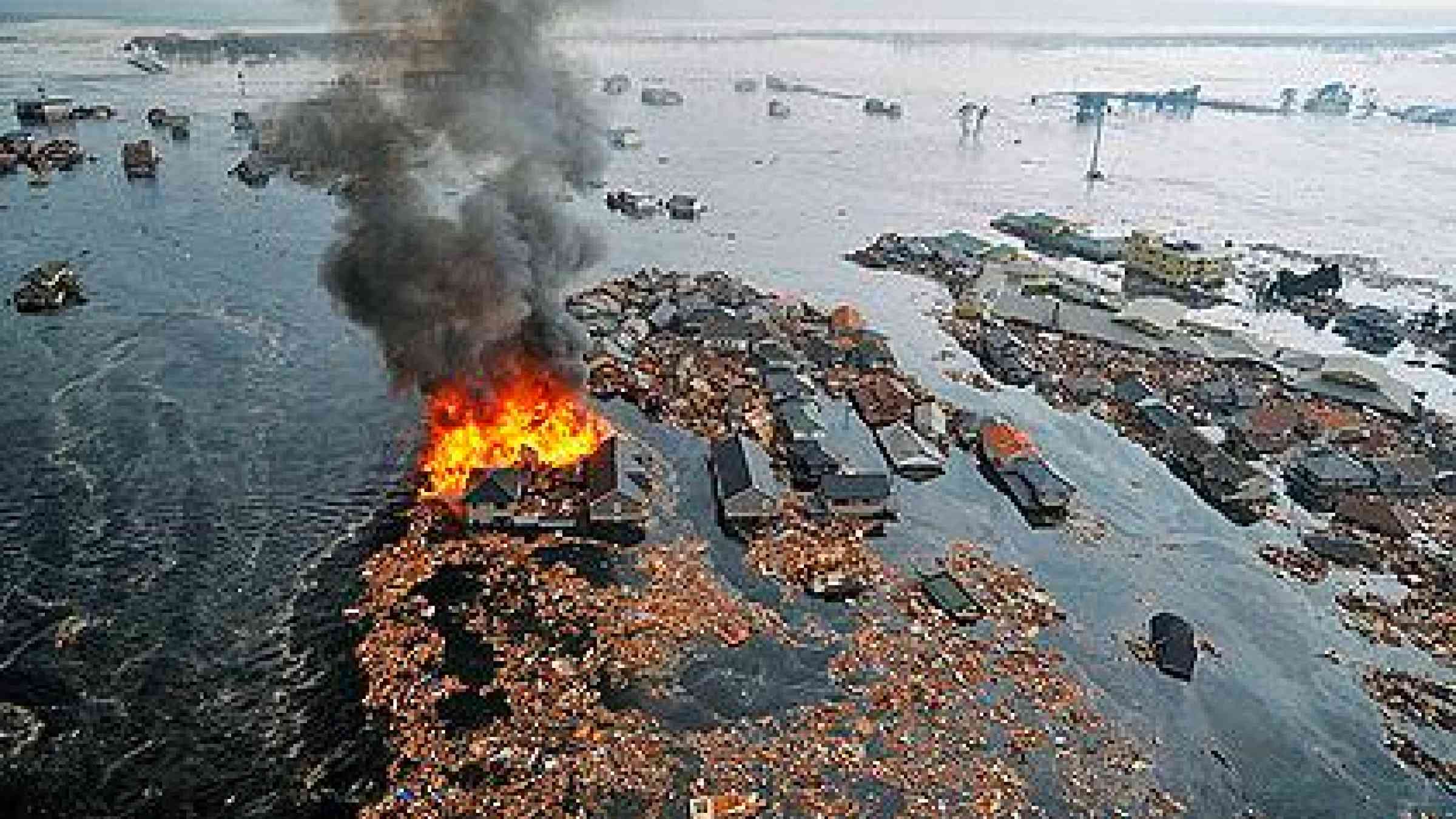UNISDR warns against ignoring seismic threats as quakes wreak havoc for second year

Japan earthquake & tsunami damage March 2011
302 human impact disasters claimed 29,782 lives; affected 206 million and inflicted record economic damages of $366 billion in 2011
Geneva, 18 January 2012 – For two consecutive years the long-term disasters trend has been bucked by major earthquakes which claimed thousands of lives and affected millions in both 2010 and 2011, according to new statistics published today by CRED and the UN office for disaster risk reduction, UNISDR.
UNISDR Chief, Margareta Wahlström, said today: “The Great East Japan Earthquake and the accompanying tsunami is a reminder to us all that we cannot afford to ignore the lessons of history no matter how forgotten. The many major cities located in seismic zones need to take seriously the probability of return events even if many years have passed since the last seismic event of major magnitude.
“In 2010 we saw this phenomenon as well when over 220,000 people died in Haiti which had not been hit by an earthquake of such strength for almost 200 years. Unless we prepare for the worst then many earthquake-prone urban areas around the world are destined to see even greater loss of life in the future as more and more people move to cities.”
Figures released today by the Centre for Research on the Epidemiology of Disasters (CRED) at a UNISDR-hosted press conference in Geneva showed that 20,943 people lost their lives in earthquakes last year out of a total of 29,782 people directly killed by 302 disasters. The earthquake fatalities included 19,846 who died in Japan while the remainder were largely accounted for by the October earthquake in Turkey.
The year was marked by the fact that major disasters in terms of human impact and economic losses occurred in high and middle-income countries. These included the Brazil floods (January); the New Zealand earthquake (February); the Japan earthquake/tsunami (March); two waves of severe storms and tornadoes in the USA (April and May); Hurricane Irene in the USA, (August/September); floods in Thailand (August to December); the October earthquake in Turkey and the December storm Sendong (Washi) in the Philippines.
In the case of Brazil, the floods were the deadliest in the country’s history (900 deaths), and in the case of Thailand, the country’s most expensive natural catastrophe ($40 billion).
Prof. Debby Guha-Sapir, Director of CRED at the University of Louvain, Belgium, said: “It was notable last year that many of the disasters were in high and in middle-income countries which have the resources for better disaster prevention.”
CRED estimates the economic losses from disasters in 2011 at $366 billion compared to $243 billion in the last record year of 2005.
Other major causes of disaster deaths last year were floods, 5,202, and storms, 3,076. Extreme temperatures claimed just 231 lives compared to the annual ten year average of 14,731 between 2001 and 2010.
Overall, 206 million people were affected by a total of 302 recorded disaster events last year. Some 106 million people were hit by floods while 60 million were affected by drought, mainly in China and in the Horn of Africa and storms impacted on 34 million people.
Prof. Guha-Sapir said: “Droughts and famines are rarely spectacular events, but they end up causing massive deaths which go uncounted. As droughts are set to rise in Sub-Saharan Africa, they will continue to devastate large populations. In this context, reliable statistics and data should be a priority for better and more timely preventive action.”
The year was bookended by two major disasters in Asia: The Great East Japan Earthquake in March claimed 19,846 lives and December saw 1,430 people lose their lives in tropical storms in the Philippines.
In 2011, more than 45% of disasters occurred in Asia. Over 85% of those killed and those affected globally and 75% of economic damages were also in Asia. On the other hand, Europe experienced very few disasters and impacts in 2011 with the lowest numbers killed, numbers affected and economic damages since 1990.
Given the importance of good data for policy, CRED underlines the critical importance of a stronger global approach to disaster data collection for more effective policy development.
For more information please contact:
Denis McClean
Media Relations
Tel: +41 22 917 8897
Mobile: +41 79 217 3357
mccleand@un.org
www.unisdr.org
****
Note to editors:
Statistics: Natural disasters in 2011
- Occurrence of natural disasters: 302 country level disasters
- Total deaths: 29,782
- Total affected: 206 million
- Estimated damage: 366 billion US$
Since 1988, CRED has maintained an International Disaster Database known as EM-DAT. EM-DAT includes all disasters from 1900 until present, which fit at least one of the following criteria: 10 or more people killed; 100 or more people affected; a declaration of a state of emergency by country authorities; or an appeal for international assistance by country authorities.
For more information on the CRED figures, please also contact:
Régina Below
Centre for Research on the Epidemiology of Disasters (CRED)
Research Institute Health & Society – Université catholique de Louvain
Tel: +32-2-764-3326, Fax: +32-2-764-3341
E-mail: regina.below@uclouvainbe, Internet: http://www.cred.be
The EM-DAT Project is supported by USAID.
Explore further
Also featured on
Is this page useful?
Yes No Report an issue on this pageThank you. If you have 2 minutes, we would benefit from additional feedback (link opens in a new window).